
History
IS IMPORTANT
Explore
Search for a specific event or composer, or view all events from a season using the dropdown menu.
SEASON
- 2008 June
- 2009 June
- 2010 June
- 2011 June
- 2012 January
- 2012 June
- 2013 January
- 2013 June
- 2014 January
- 2014 June
- 2015 January
- 2015 June
- 2016 December
- 2016 January
- 2016 June
- 2017 January
- 2017 June
- 2017 March
- 2018 January
- 2018 June
- 2019 January
- 2019 June
- 2020 January
- 2021 June
- 2022 January
- 2022 June
- 2023 January
- 2023 June
- 2024 January
- 2024 June
- 2025 January

June 2015: Festival Series 4
Tonight’s performance has been made possible by the generosity of Linda Tam.
Closing night of the 2015 Walla Walla Chamber Music Festival bids au revoir with a pair of virtuoso works for harp and strings.
The Debussy Danse Sacrée et Danse Profane for Harp and Strings has been the measure of many a harpist since its composition in 1904. Fellow Frenchman Camille Saint-Saëns composed his Fantaisie for Harp and Violin in 1907. Though close in age, these works inhabit very different sound worlds. Bringing everything to a close is the virtuosic Sextet for Piano and Strings by Felix Mendelssohn. Pound for pound, Mendelssohn delivered more show-stoppers than any other composer by the age of 18. The D Major Sextet is just that, composed when Mendelssohn was but 15 years old. It is a fitting way to usher in the 2016 Festival season over which Mendelssohn will preside as subject of the year’s poster.
Camille Saint-Saëns (1835-1921)
FANTAISIE FOR VIOLIN AND HARP
Claude Debussy (1862-1918)
DANSE SACRÉ ET DANSE PROFANE FOR HARP AND STRINGS
Intermission
Felix Mendelssohn (1809-1847)
PIANO SEXTET IN D MAJOR, OP. 110
I. Allegro vivace
II. Adagio
III. Minuetto: Agitato
IV. Allegro vivace — Agitato — Allegro con fuoco
Artists: Winston Choi, piano; Timothy Christie, viola; Norbert Lewandowski, cello; Amy Ley, harp; Christina McGann, violin; Stephen Miahky, violin; Philip Payton, violin; Maria Sampen, violin; Stephen Schermer, bass; Sally Singer Tuttle, cello; and MingHuan Xu, violin.
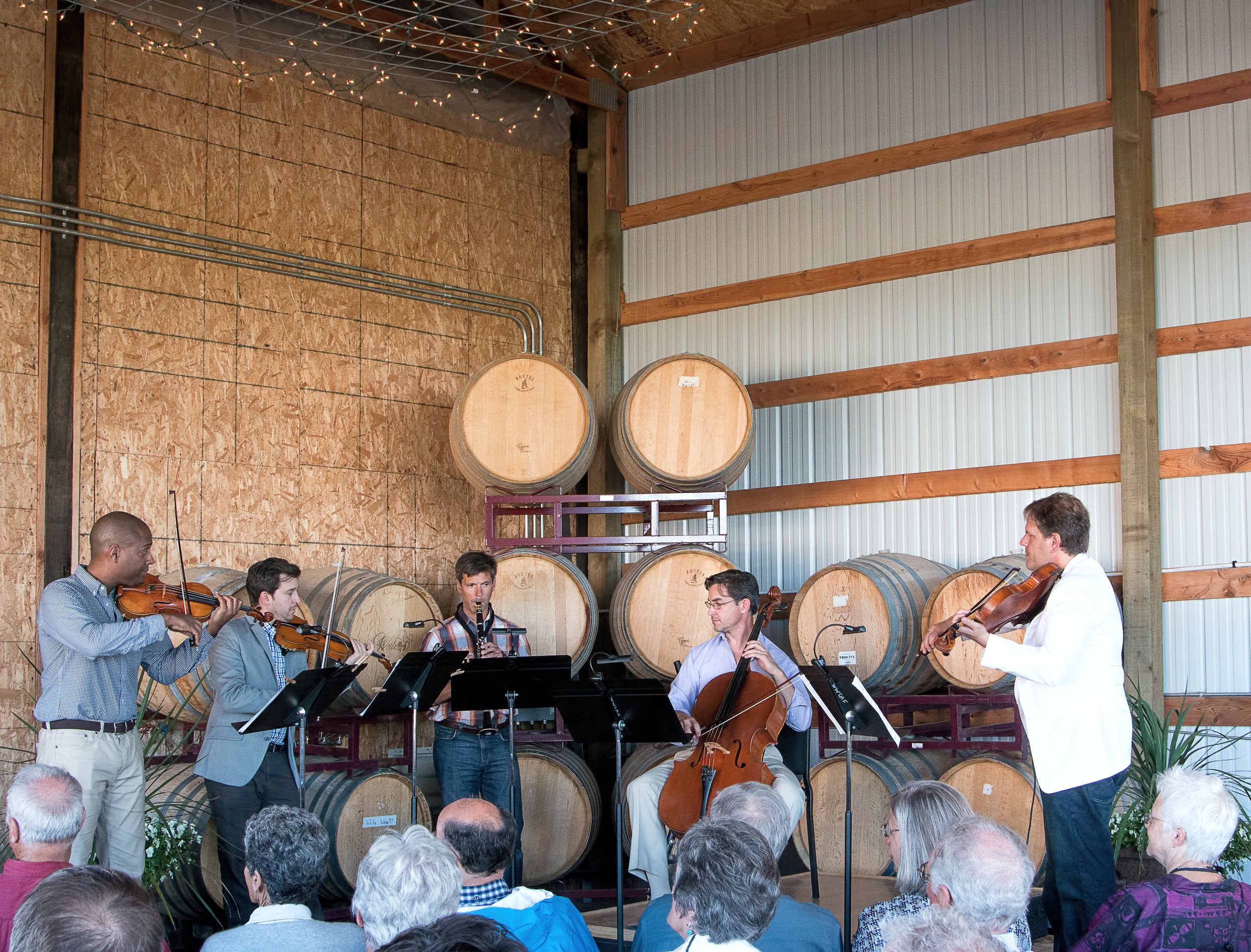
June 2015: Tasting Music 4
Tonight’s performance has been made possible by the generosity of Mike and Sue Gillespie.
In an interesting coincidence the Festival returns to TERO Estates with music of Claude Debussy for a second year in a row. The ragtime shenanigans of Golliwog from our 2014 Season give way to a pair of dances for harp and strings: one sacred and one profane. Profane, of course, means "secular", and does not refer to any four-letter words uttered during performance. The so-called profane dance is a gentle waltz-like movement, while the sacred dance has a dignified processional quality. Debussy composed the work at the request of an instrument maker in Paris to show what the newly invented cross-strung chromatic harp could do. Like Betamax in the 1980’s, the cross-strung chromatic harp ultimately lost out to the VHS-like concert pedal harp. Happily, Debussy’s beautiful work remains, and is equally suited to the winning instrument heard tonight.
Claude Debussy (1862-1918)
DANSE SACRÉ ET DANSE PROFANE FOR HARP AND STRINGS
Artists: Timothy Christie, viola; Norbert Lewandowski, cello; Amy Ley, harp; Stephen Miahky, violin; Philip Payton, violin; and Stephen Schermer, bass.
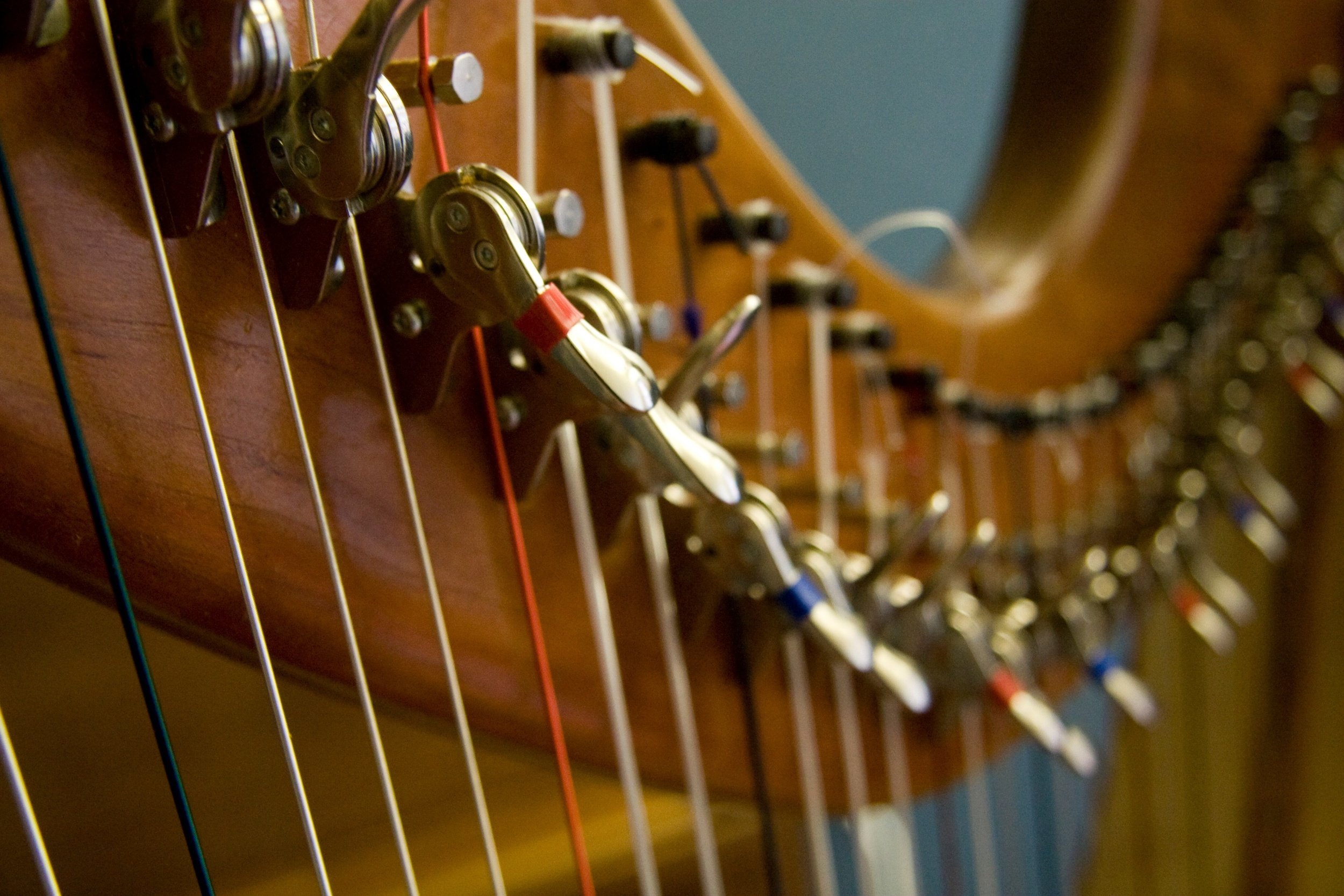
June 2015: Portrait of an Artist 4: Amy Ley, Harp
Tonight’s performance has been made possible by the generosity of a donor who wishes to remain anonymous.
Pop culture often depicts heaven as a place in the clouds with pearly gates. Angels clad in robes of classical Greek design soar to and fro on diminutive wings. One musical instrument above all others has come to be associated with such a scene, the harp.
Harpist Amy Ley will dispel as poppycock such frivolous notions of her chosen instrument. The harp stands six feet tall, weighs 90 pounds, and its 47 strings exert 4,400 pounds of pressure on the instrument’s soundboard. Try flying around in a toga carrying one of these babies!
And yet, Amy’s life as a musician is bound to this impractically large instrument. Third floor walk-up? Sure. Public transportation? Yup. The harp goes everywhere. This evening’s performance is sure to convince you why it is all worth it!
ANNOUNCED FROM THE STAGE
Concerto in B-Flat, Handel
solo from "Lucia di Lamermoor,” Donizetti
Ariadne’s Dance from “The Crown of Ariadne,” Schafer
Stairway to Heaven, Led Zeppelin
Fauré
Bordel 1900 from "L’Histoire du Tango,” Piazzola — with Timothy Christie
Artist: Amy Ley, harp
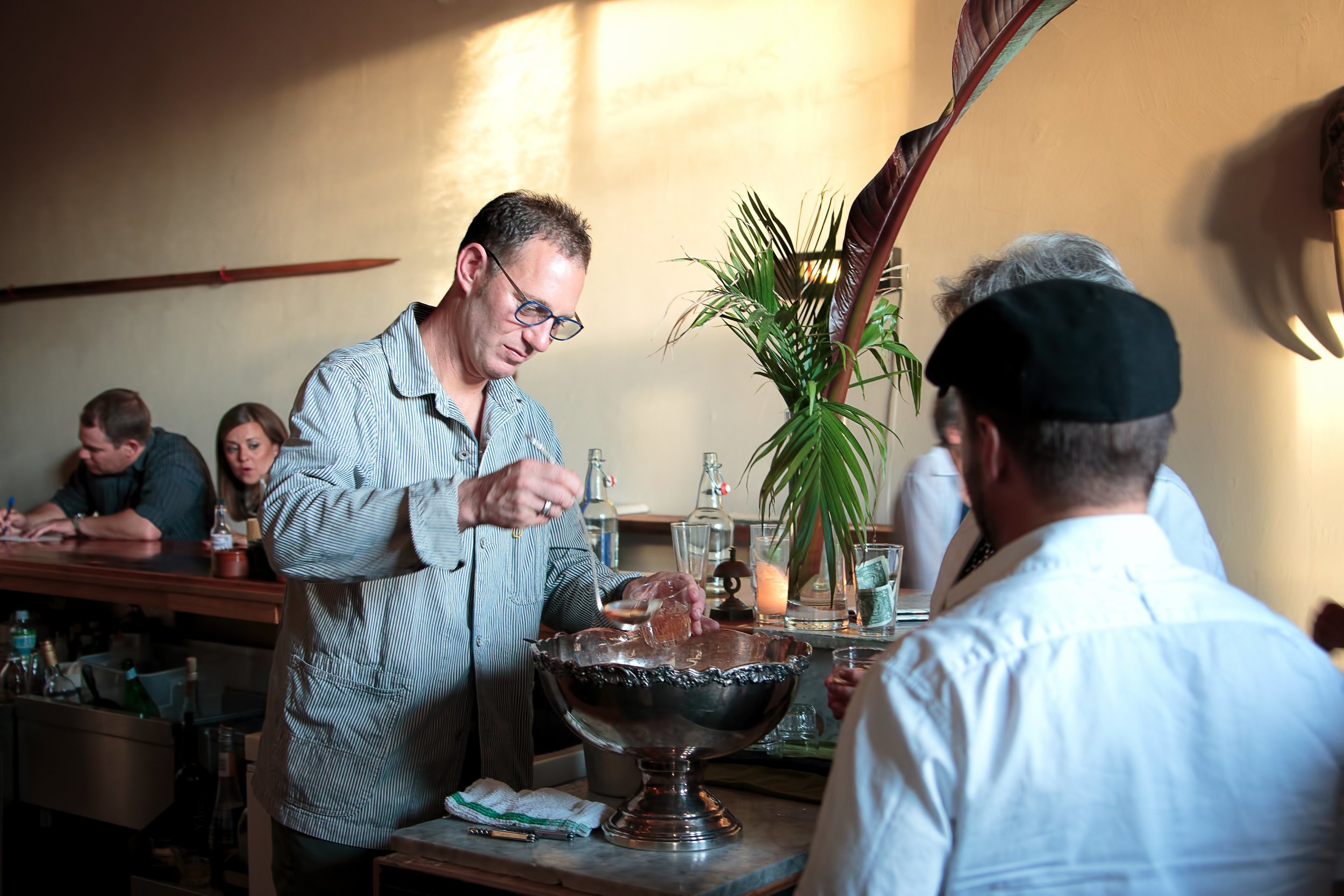
June 2015: Special Event 3: Joseph Haydn, Godfather of the String Quartet
Tonight’s performance has been made possible by the generosity of Larry and Sharon Clinton; and Rick and Cecile Ervin.
Count ’em, 84 string quartets. What’s more, they are all good. Joseph Haydn is known for many things: longevity, business savvy, kindness to his peers, prolific output, and limitless invention. He composed extensively in all genres sacred and secular. Masses, operas, symphonies, oratorios, concertos and sonatas form only a partial list.
Through the execution of his duties to the noble Esterhazy family in Hungary, Haydn invented modern chamber music as we know it. This evening we will explore a tiny sliver of the 84 string quartets Haydn composed, and investigate works by later composers who extended his legacy through pioneering the medium of the string quartet. We will also challenge pioneering mixologist Jim German to craft 84 suitable cocktails for the occasion, each with no more than four ingredients… A new body of quartets altogether!
Artists: Timothy Christie, viola; Norbert Lewandowski, cello; Christina McGann, violin; Stephen Miahky, violin; Philip Payton, violin; Maria Sampen, viola; Sally Singer Tuttle, cello; and MingHuan Xu, violin.
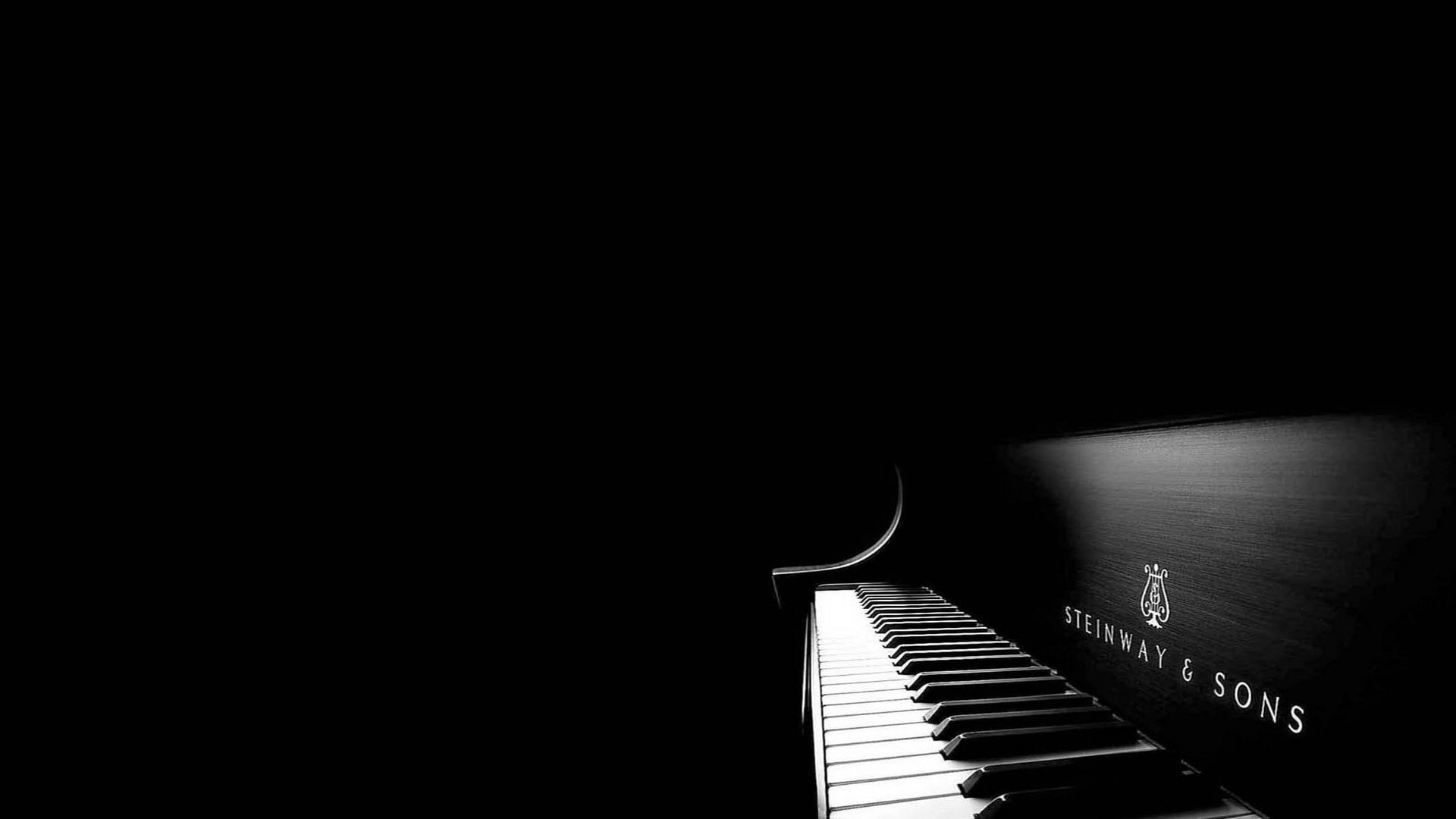
June 2015: Special Event 2: Winston Choi, Piano
Tonight’s performance has been made possible by the generosity of a donor who wishes to remain anonymous.
Due to performance-related injury, Benjamin Hochman will be unable to perform this June. Pianist Winston Choi has generously agreed to step in. We wish Benjamin a speedy recovery. We look forward to a return engagement once he heals.
The Chicago Tribune had this to say about Winston Choi: “There doesn’t appear to be anything Choi can’t play — and with virtuosic panache to boot.” I think that sums it up pretty well. Winston is the winner of several prestigious international competitions including the 2002 Orléans Concours International and the 2003 Honens International Piano Competition.
But more importantly, Winston was the inspiration for the Festival’s Portrait of an Artist Series.
It all began in Boston at the exclusive St. Botolph Club. Several musicians, Winston among them, were relaxing following a delicious meal. Before long, someone noticed the grand piano across the room. It was suggested that Winston play through some of his repertoire for an upcoming recital. After a few beautifully rendered selections, musicians began calling out requests. Winston gamely played through a staggering amount of repertoire that night, and we all felt that we knew him better for it.
Tonight’s recital will be moderated by Festival Founder and Artistic Director, Timothy Christie. Tickets are extremely limited for this special event.
ANNOUNCED FROM THE STAGE
Partita No. 1 in B Flat, Bach
6 Bagatelles, Op. 126, Beethoven
Prelude in D-Flat, Op. 28, No. 15, “Raindrop,” Chopin
Variations on a Theme of Handel, Brahms
Fugue, Bach (Encore)
Artist: Winston Choi, piano.
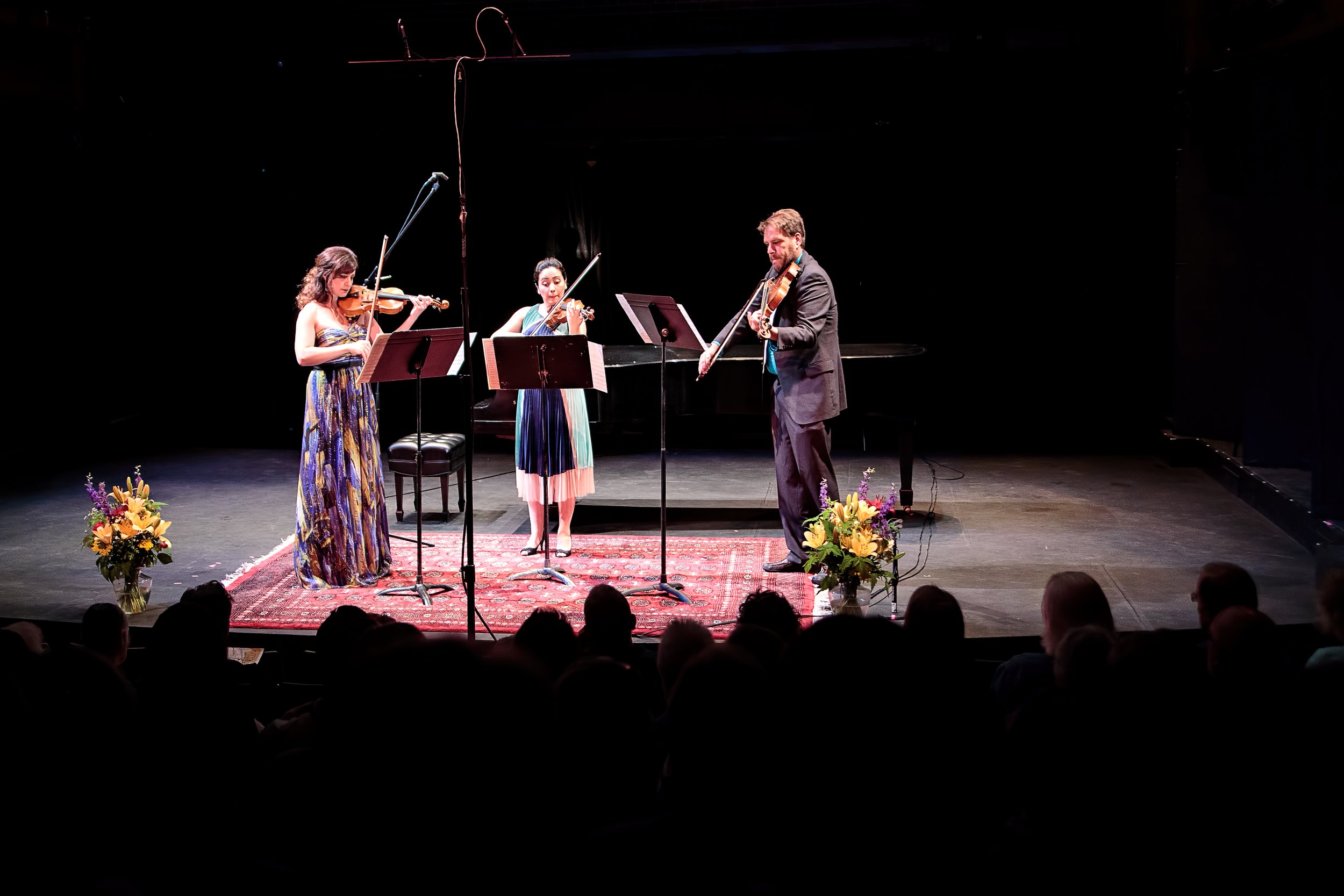
June 2015: Festival Series 3
Tonight’s performance has been made possible by the generosity of Iain and Stephanida Christie.
If you are expecting a lull in intensity for Festival Series 3, you are sadly mistaken. On tap is the raucous Piano Quartet in G minor, Op. 25 by Johannes Brahms. While the work enjoyed a second life as a piece for large orchestra, arranged by Arnold Schönberg, the original delivers well beyond its intimate instrumentation of piano, violin, viola and cello. For the occasion, pianist Winston Choi makes his Walla Walla debut. Festival Series 3 will have you booking passage to Hungary to experience first hand the music that inspired Brahms to compose the concluding Gypsy Rondo Finale.
John David Earnest (1940-)
TROIS MORCEAUX (1977)
I. Bagatelle
II. Elegy
III. Caprice
Darius Milhaud (1892-1974)
LA CRÉATION DU MONDE FOR STRING OCTET (1923), ARR. DANNY SEIDENBERG
Intermission
Johannes Brahms (1833-1897)
PIANO QUARTET IN G MINOR, OP. 25
I. Allegro
II. Intermezzo: Allegro
III. Andante con moto
IV. Rondo alla Zingarese: Presto
Artists: Winston Choi, piano; Timothy Christie, viola; Norbert Lewandowski, cello; Christina McGann, violin; Stephen Miahky, violin; Philip Payton, violin; Maria Sampen, violin; Kevin Schempf, clarinet; Arianna Warsaw-Fan, violin; and Meta Weiss, cello.
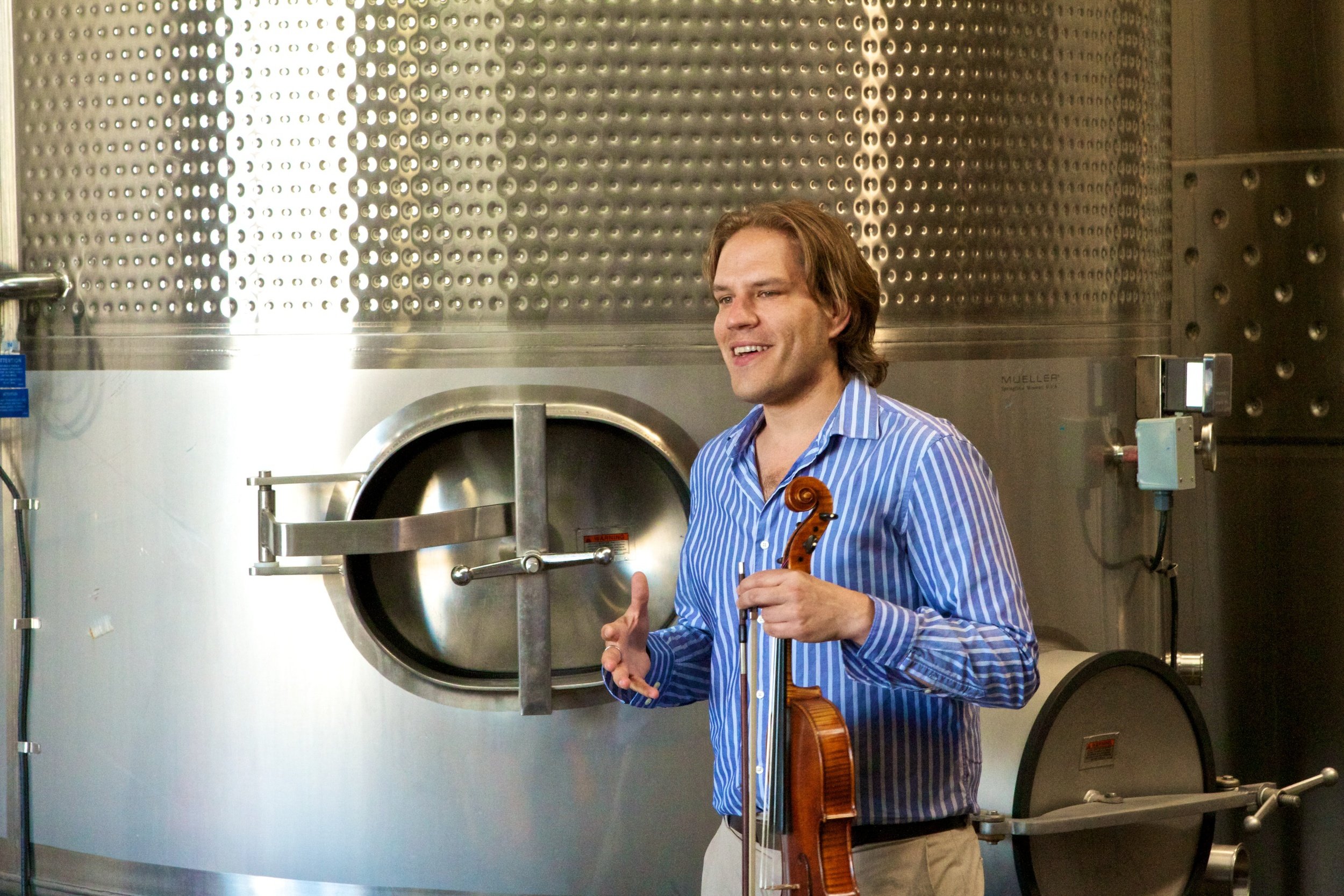
June 2015: Tasting Music 3
Tonight’s performance has been made possible by the generosity of Richard S. O’Connor.
The year was 1922. Nightclubs all over Harlem pulsed with the exotic rhythms and harmonies of jazz. This was not the dancehall music of midtown hotels and clubs. This was something new. Night after night, a young French composer visiting America for the first time, Darius Milhaud, headed up to Harlem, captivated by this new form of music. It was as if a new world had opened up to him.
The result of Milhaud's Harlem nights became the aptly named ballet, La Création du Monde (the creation of the world). The work, scored for various wind percussion and string instruments, conveys a primal African creation myth. While it received initially mixed reviews, the eventual influence of jazz on classical music was inevitable. Before a decade had passed, La Création du Monde was widely recognized as an important work.
Tonight, we encounter the piece in a brilliant string octet arrangement by jazz violinist and composer Danny Seidenberg of Turtle Island Quartet fame. We’ll take you back nearly a century to Harlem in the 20’s and you won’t even have to take the A Train.
Artists: Timothy Christie, viola; Norbert Lewandowski, cello; Christina McGann, violin; Stephen Miahky, violin; Philip Payton; Maria Sampen, violin; Meta Weiss, cello; and Arianna Warsaw-Fan, violin
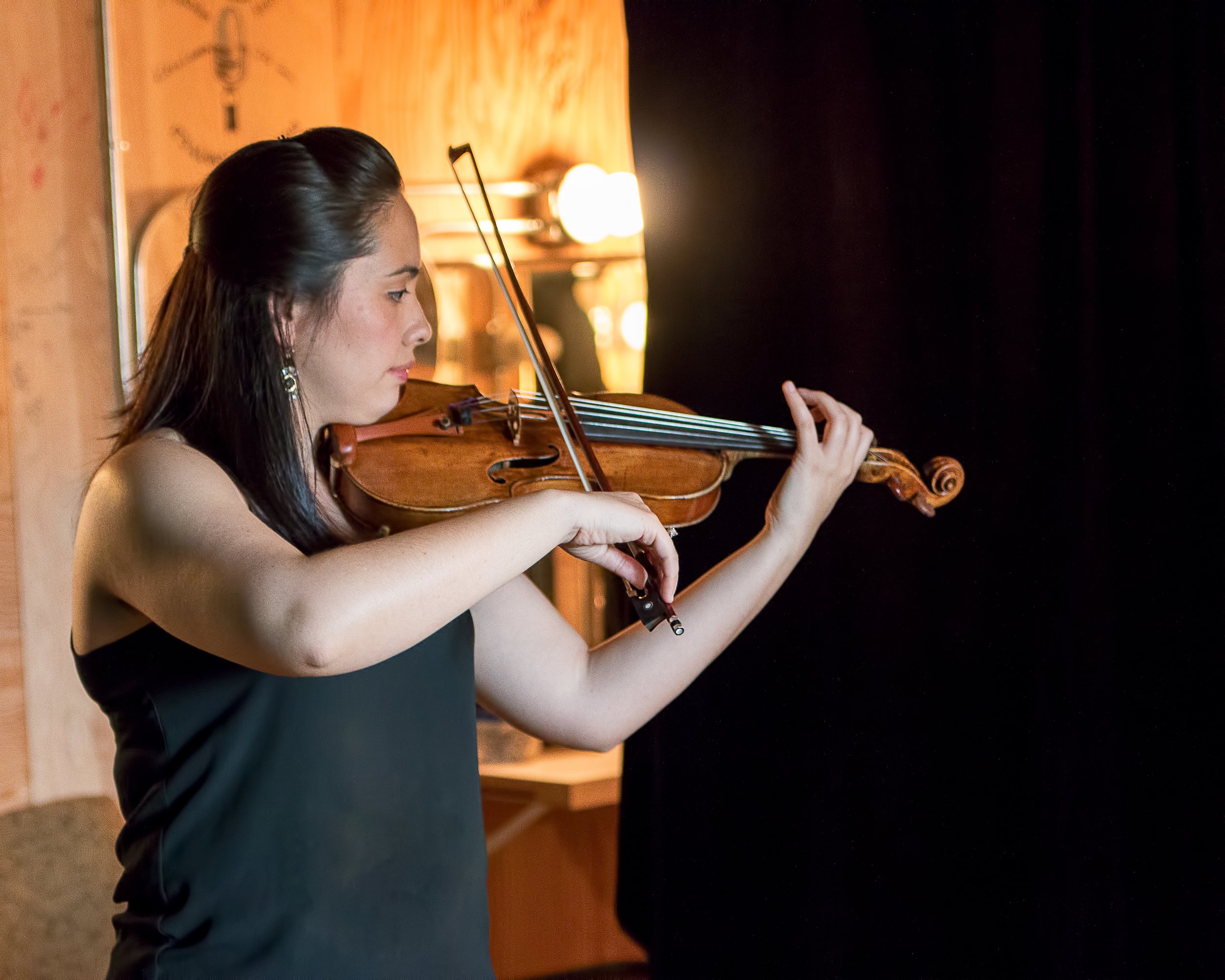
June 2015: Portrait of an Artist 3: Christina McGann, Violin
Tonight’s performance has been made possible by the generosity of Albert Marshall.
It was June, 2008. A future Festival Board member was digging in his backyard. He heard a sound that caught his attention. A violin. A good violin. A darn good violin! What piece is that? Who could be playing this amazing music?
It was the first season of the Walla Walla Chamber Music Festival, and violinist Christina McGann was practicing in her room at the Festival rental house on Catherine Street. The music was the demanding Tempo di ciaccona from Bartok’s Sonata for Solo Violin.
The future Board Member was none other than jazz trombonist, composer, and Whitman College Professor, Dave Glenn. Dave understands what happens when Christina plays. Come find out for yourself as the Festival visits Forgeron Cellars for the first time. You will forge an instant friendship with Christina, just as Dave did seven years ago.
ANNOUNCED FROM THE STAGE
Passacaglia, Biber
Sonata for 2 violins in A minor, Ysaÿe — with Stephen Miahky
Wolfgang’s Tango, Glenn — with David Glenn and Norbert Lewandowski
Albumblatt, Wagner — with Stephen Miahky, Maria Sampen and Norbert Lewandowski
Czardas, Monti —with Stephen Miahky, Maria Sampen and Norbert Lewandowski
Artist: Christina McGann, violin.

June 2015: Special Event 1: Collage — A Bohemian Rhapsody (Late Show)
Thunderbolts and lightning are very, very frightening, but there is nothing to be scared of during this evening of musical surprises. A full cast of festival artists will bring their unique talents and perspectives to the Charles Smith Wines Tasting Room in downtown Walla Walla.
Collage is a style of performance that weaves a variety of musical sources and styles into a continuous tapestry of sound. Unfolding in two continuous sets separated only by a brief intermission to catch your breath, Collage transcends boundaries between different styles of music. Ancient meets modern; classical meets contemporary. The inherent intimacy of chamber music means that you get to be right in the thick of it. And yes, we will do the Fandango.
Artists: Timothy Christie, viola; duoW; Jennifer Goltz-Taylor, soprano; Andrew Jennings, violin; Norbert Lewandowski, cello; Christina McGann, violin; Stephen Miahky, violin; Philip Payton, violin; Maria Sampen, violin; Kevin Schempf, clarinet; Arianna Warsaw-Fan, violin; and Meta Weiss, cello.
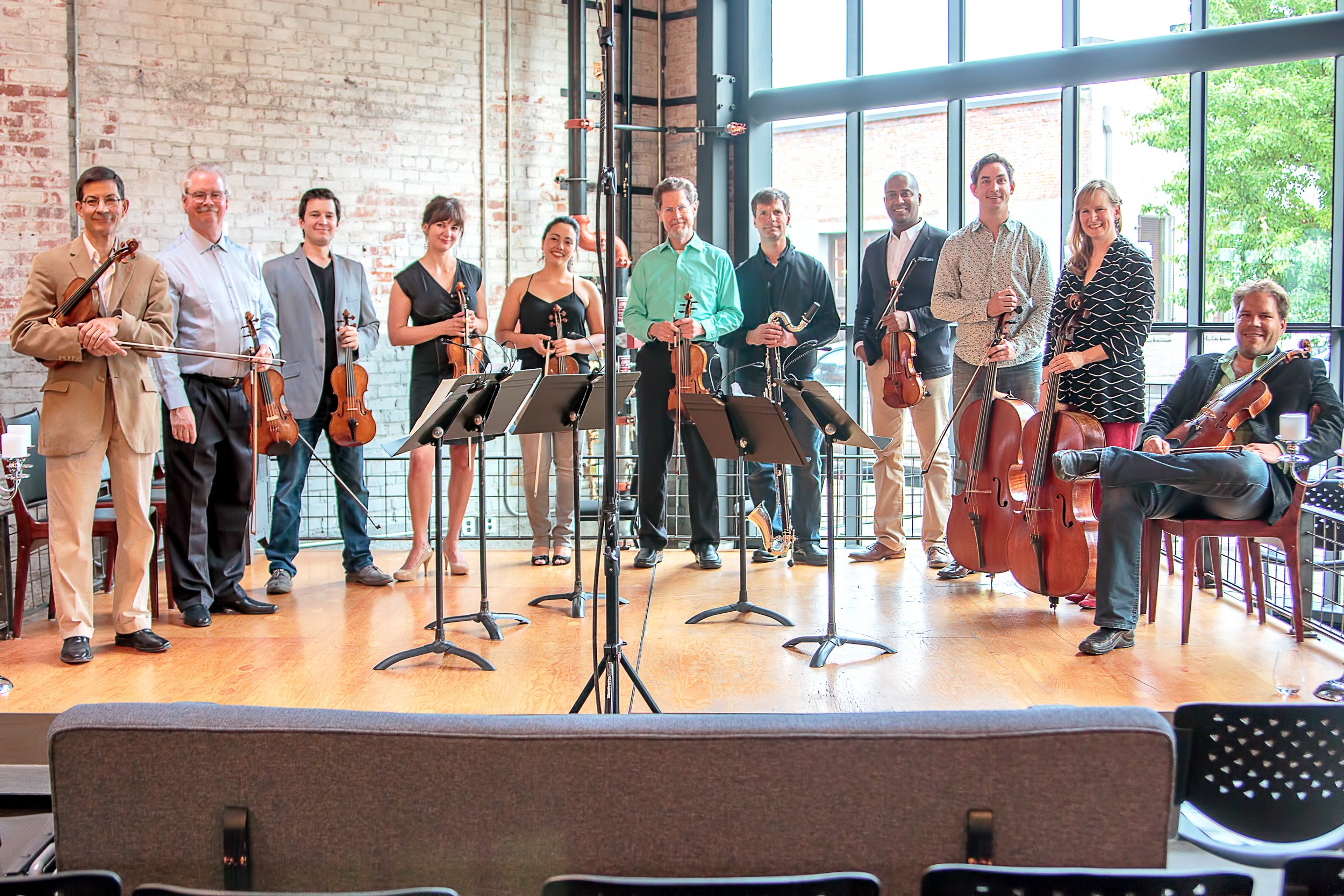
June 2015: Special Event 1: Collage — A Bohemian Rhapsody (Early Show)
Thunderbolts and lightning are very, very frightening, but there is nothing to be scared of during this evening of musical surprises. A full cast of festival artists will bring their unique talents and perspectives to the Charles Smith Wines Tasting Room in downtown Walla Walla.
Collage is a style of performance that weaves a variety of musical sources and styles into a continuous tapestry of sound. Unfolding in two continuous sets separated only by a brief intermission to catch your breath, Collage transcends boundaries between different styles of music. Ancient meets modern; classical meets contemporary. The inherent intimacy of chamber music means that you get to be right in the thick of it. And yes, we will do the Fandango.
Artists: Timothy Christie, viola; duoW; Jennifer Goltz-Taylor, soprano; Andrew Jennings, violin; Norbert Lewandowski, cello; Christina McGann, violin; Stephen Miahky, violin; Philip Payton, violin; Maria Sampen, violin; Kevin Schempf, clarinet; Arianna Warsaw-Fan, violin; and Meta Weiss, cello.

June 2015: Festival Series 2
Tonight’s performance has been made possible by the generosity of Dick and Julie Swenson.
Festival Series 2 features two Classical Era masterpieces. One, by Haydn, is known by the loftiest of monikers, “The Emperor.” The other, by Mozart, is known by a somewhat more pedestrian nickname, “Kegelstatt.” Not up on your German? Kegelstatt is the eighteenth century version of a bowling alley. These two nicknamed works could be seen as emblematic of the two composers who penned them.
Haydn, ever known by his compositional wit, was at ease among the upper classes, enjoying patronage and success in business. Mozart, ever known by his sophomoric wit, had difficulty with authority and died in poverty. The two composers were great friends and mutually admired each other’s work. Festival Series 2 will showcase the mastery of both.
Wolfgang Amadeus Mozart (1756-1791)
TRIO IN E FLAT FOR PIANO, VIOLA AND CLARINET, K. 498 “KEGELSTATT”
I. Andante
II. Menuetto
III. Allegretto
Samuel Barber (1910-1981)
KNOXVILLE: SUMMER OF 1915, OP. 24
Intermission
Joseph Haydn (1732-1809)
STRING QUARTET OP. 76, NO. 3 “EMPEROR”
I. Allegro
II. Poco adagio; cantabile
III. Menuetto. Allegro
IV. Finale. Presto
Artists: Timothy Christie, viola; Jennifer Goltz, soprano; Andrew Jennings, violin; Norbert Lewandowski, cello; Stephen Miahky, violin; Laura Renz, viola; David Requiro, cello; Maria Sampen, violin; Kevin Schempf, clarinet; Meta Weiss, cello; and Wei-Han Wu, piano.
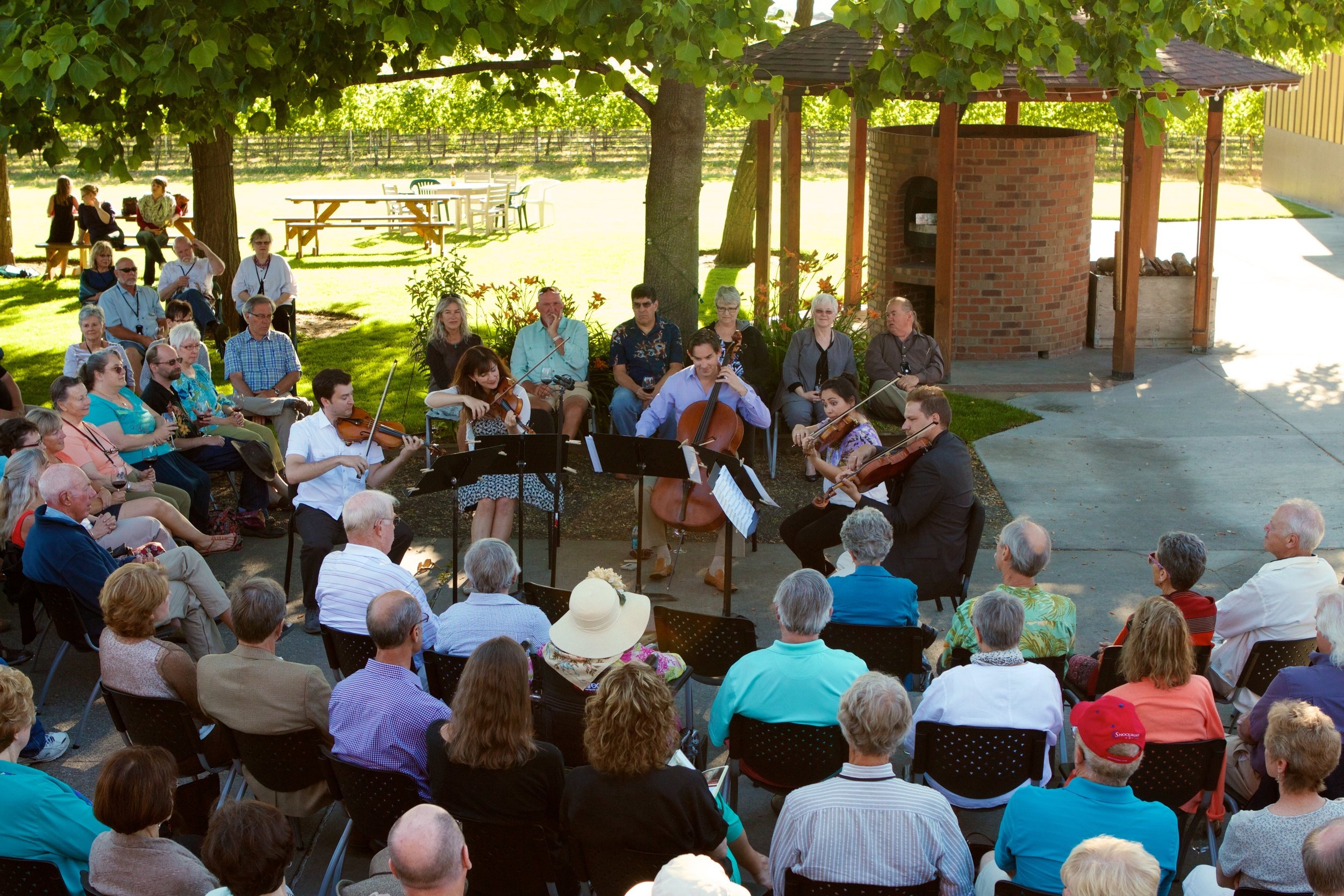
June 2015: Tasting Music 2
Tonight’s performance has been made possible by the generosity of Ben and Landra Macy.
Haydn is the undisputed champion of chamber music. His 84 string quartets alone qualify him as such. Tonight, we explore perhaps his most famous quartet, the Emperor. Haydn was a seasoned world traveler. During his visit to England in 1791, he was greatly impressed by the national pride reflected in renditions he heard of God Save the King. In 1797, Haydn decided to emulate what he had encountered in England, composing an anthem Gott erhalte Franz den Kaiser or God Save Emperor Franz.
Late in life and in ill health, Haydn sat at his keyboard playing the hymn over and over. In 1922, the hymn was adopted by Germany as its national anthem, and known around the world by the lyrics “Deutschland, Deutschland über Alles.” While associations with the melody and its various texts have changed throughout history, Haydn’s Quartet, Op. 76, No. 3 features as its second movement the music without words, and stands as a stunning example of strophic variation. While the second movement draws plenty of attention, the quartet as a whole shows Haydn to be a master of form, expression and humor.
Joseph Haydn (1732-1809)
STRING QUARTET OP. 76, NO. 3 “EMPEROR”
I. Allegro
II. Poco adagio; cantabile
III. Menuetto. Allegro
IV. Finale. Presto
Artists: Timothy Christie, viola; Andrew Jennings, violin; Stephen Miahky, violin; and David Requiro, cello.
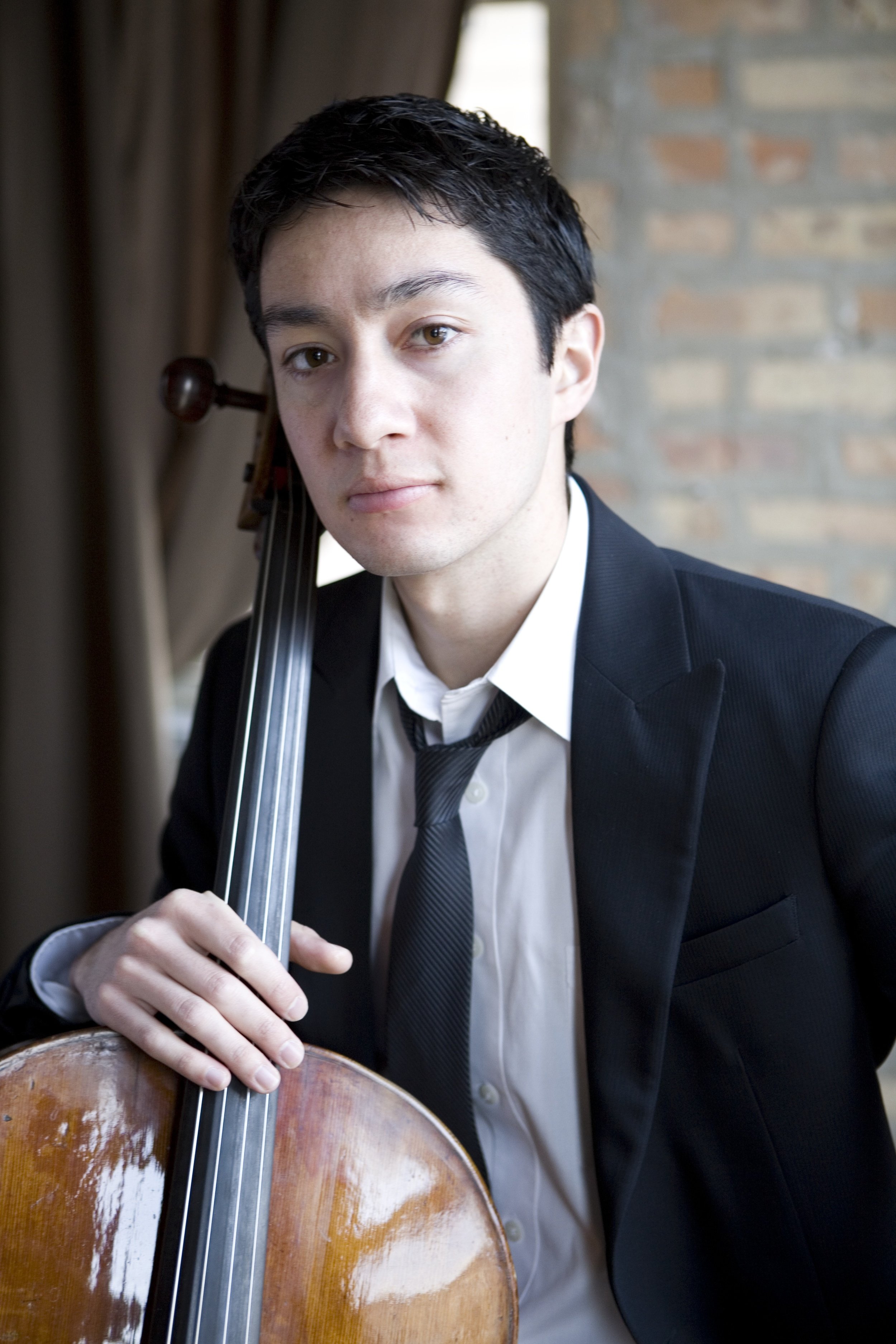
June 2015: Portrait of an Artist 2: David Requiro, Cello
Tonight’s performance has been made possible by the generosity of Mary and David Meeker.
The tasting room at Canoe Ridge Vineyards will resonate not with bells as it did back when it housed the Walla Walla Traction Company’s trolleys, but with the songful tone of solo cello. David Requiro is one of the finest cellists of our generation, garnering numerous awards including First Prize at the prestigious 2008 Walter W. Naumburg Foundation International Violoncello Competition. What's the difference between a violoncello and a cello? It’s really the same thing as the difference between a violin and a fiddle. We’ll settle the matter and much more during this must-see recital.
ANNOUNCED FROM THE STAGE
Allemande, Sarabande and Gigue from C Major Suite, Bach
Preludio-Fantasia from the Suite for Unaccompanied Cello, Cassado
5 Bukoliki, Lutoslawski — with Timothy Christie
Cello Duo, Sollima
Artists: Timothy Christie, viola; David Requiro, cello; and Meta Weiss, cello.
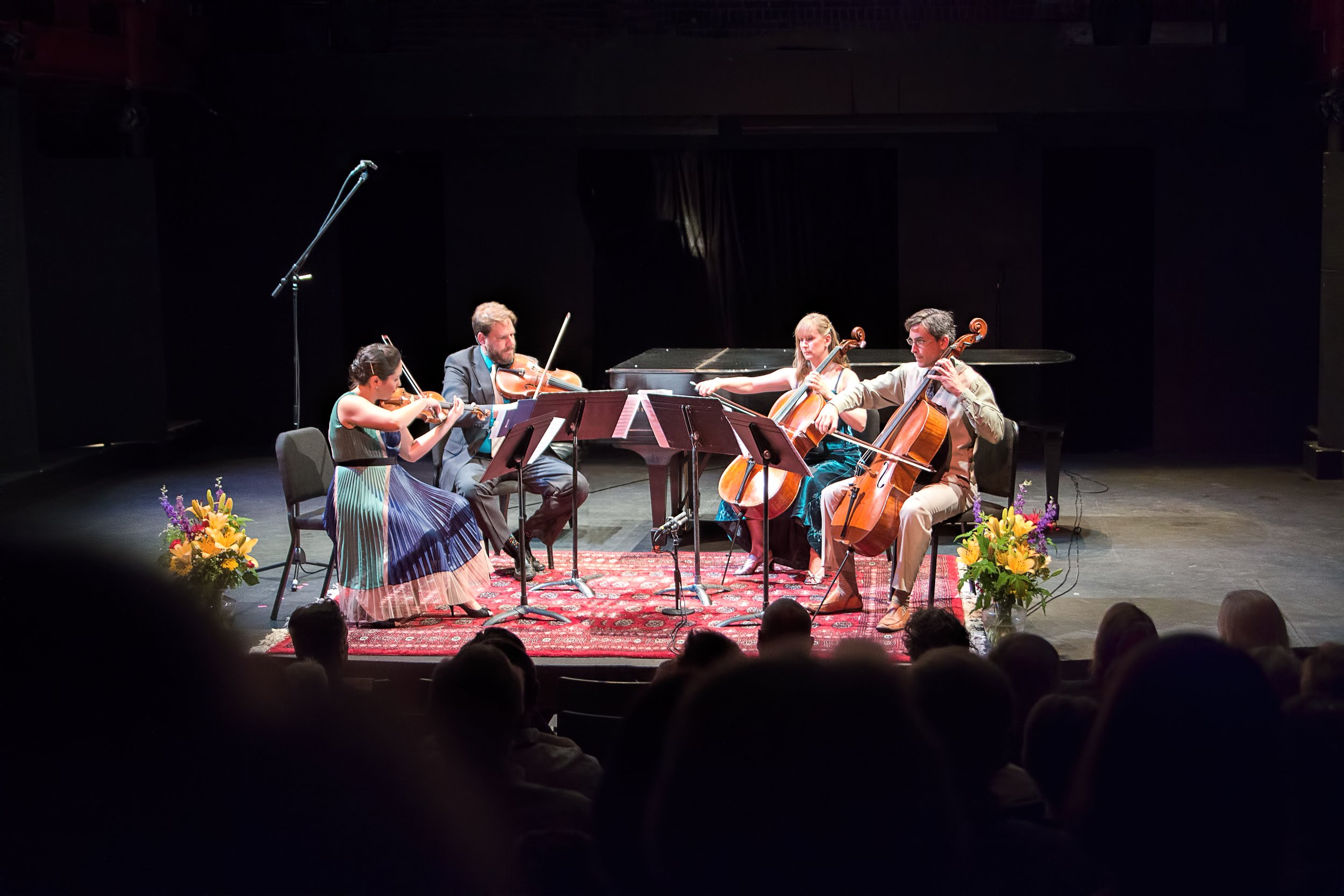
June 2015: Festival Series 1
Tonight’s performance and the World Premiere of Last Chants by composer, James M. Stephenson, has been made possible by the generosity of John Jamison and Kathy Wildermuth.
Musicians are always asked to name their favorite piece of music. It is impossible to answer correctly or even truthfully. The musician is supposed to answer by naming whatever piece he or she is currently playing. Tonight, none of the performers will have to fib even a little. The Brahms G Major Sextet stands as a favorite world-wide among string players, and more so among audiences.
Joining this venerated work on the program is a piece that has not yet been played or heard by anyone. Each season, WWCMF commissions a composer to pen a new work to receive its premiere at the opening Festival Series performance. The 2015 Festival Series kicks off with the World Premiere of the Last Chants for Piano, Violin, Viola and Clarinet by composer James Stephenson. Will the Brahms be unseated? There is only one way to find out. Join the celebration as we open the 2015 Festival Series in style!
James M. Stephenson (1969-)
LAST CHANTS FOR PIANO, VIOLIN, VIOLA AND CLARINET (2015)
Claude Debussy (1862-1918)
SONATA FOR CELLO AND PIANO (1915)
I. Prologue: Lent, sostenuto e molto risoluto
II. Sérénade: Modérément animé
III. Final: Animé, léger et nerveux
Intermission
Johannes Brahms (1833-1897)
STRING SEXTET IN G MAJOR, OP. 36
I. Allegro non troppo
II. Scherzo. Allegro non troppo
III. Poco Adagio
IV. Poco Allegro
Artists: Timothy Christie, viola; Norbert Lewandowski, cello; Stephen Miahky, violin; Laura Renz, viola; David Requiro, cello; Maria Sampen, violin; Kevin Schempf, clarinet; Meta Weiss, cello; and Wei-Han Wu, piano.
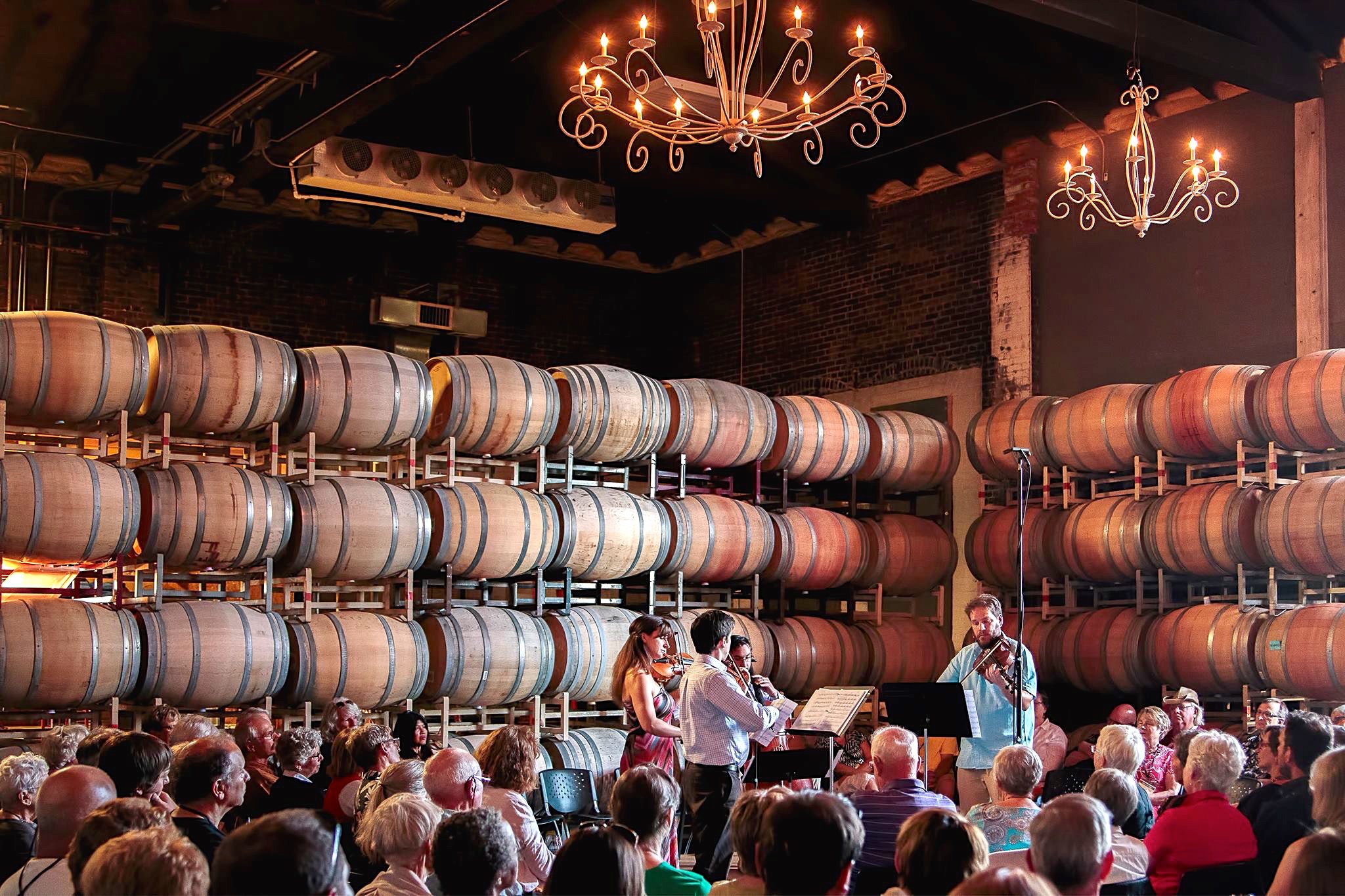
June 2015: Tasting Music 1
Tonight’s performance has been made possible by the generosity of Hal Hunt.
Brahms’ music is often described in melancholic terms. In the spectacular Sextet in G Major, Op. 36, the description holds true… for about two bars. A brooding half-step ostinato in the viola gives way to a long passage of increasing anticipation. Reaching a peak, the phrase finally reveals the object of anticipation, Agathe von Siebold, a soprano with whom Brahms had been previously engaged to be married. Brahms spells Agathe’s name in musical pitches. How, you ask? Tasting Music 1 will reveal the trick and much more about this glorious work, a favorite of string players the world over.
Johannes Brahms (1833-1897)
BRAHMS SEXTET IN G MAJOR, OP. 36
I. Allegro non troppo
II. Scherzo. Allegro non troppo
III. Poco Adagio
IV. Poco Allegro
Artists: Timothy Christie, viola; Norbert Lewandowski, cello; Stephen Miahky, violin; Laura Renz, viola; Maria Sampen, violin; and Meta Weiss, cello.
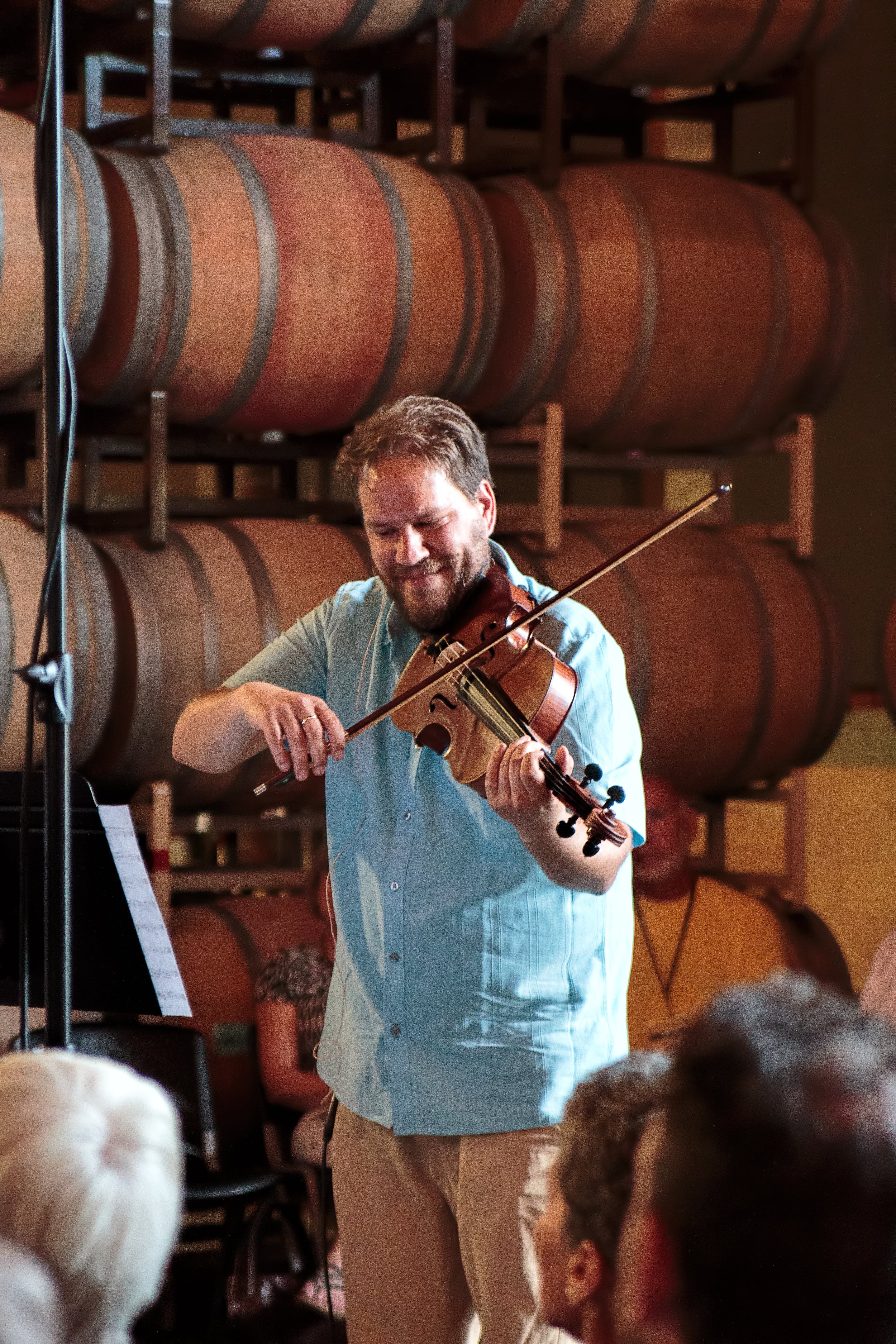
June 2015: Portrait of an Artist 1: Timothy Christie, Violin & Viola
Tonight’s performance has been made possible by the generosity of Tom and Margo Scribner.
Festival Founder and Artistic Director, Timothy Christie, usually hosts and moderates the Portrait of an Artist Series, asking probing questions of the Festival’s roster of artists and revealing aspects of musicians’ lives that do not typically make it into the artist biographies in your program book. For the kick-off event of the 2015 Season, Tim becomes the subject of the portrait.
This provokes many a question: Who will host? Will it be courteous, or will it turn into a flat out roast? In all likelihood, there will be a roast-like tenor to the proceedings, but as you might guess, there is only one way to find out. Garrison Creek Cellars lends the acoustics of a Renaissance chapel and bucolic perfection to the proceedings.
ANNOUNCED FROM THE STAGE
Scotland the Brave, traditional — with Charlotte Christie
Duo in G Major for violin and viola, III: Rondo, Mozart — with Maria Sampen
Trio Sonata in D Major, Op. 3 No. 2, Corelli — with Stephen Miahky and Meta Weiss
Trio Sonata in C Major, Op. 4 No. 1, Corelli — with Stephen Miahky and Meta Weiss
Roumanian Folk Dances, Bartok — with Christina McGann, Maria Sampen and Norbert Lewandowski
Chaconne from the d minor Partita, Bach
TIM’S "DESERT ISLAND" MUSIC SELECTIONS
Mahler Symphony No. 2, “The Resurrection”
Respighi "Church Windows”
Mozart Serenade in B Flat for winds, K. 361, “Gran Partita”
Artists: Timothy Christie, viola; Norbert Lewandowski, cello; Christina McGann, violin; Stephen Miahky, violin; Maria Sampen, violin; and Meta Weiss, cello.
